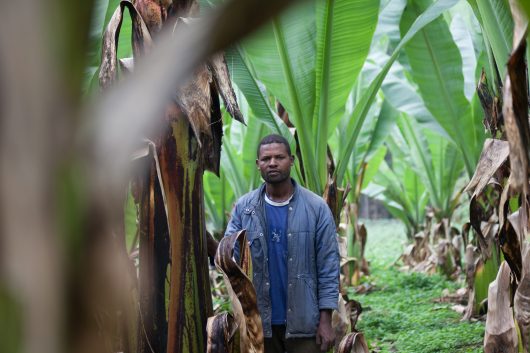False Banana Brings Food Security in Ethiopia
 According to USAID, Ethiopia’s economy is dependent on agriculture, which is 43 percent of the GDP and 90 percent of Ethiopia’s exports. With such a significant economic reliance on a single sector, the community must section a large amount of dedicated time and resources towards agriculture’s viability for food security in Ethiopia.
According to USAID, Ethiopia’s economy is dependent on agriculture, which is 43 percent of the GDP and 90 percent of Ethiopia’s exports. With such a significant economic reliance on a single sector, the community must section a large amount of dedicated time and resources towards agriculture’s viability for food security in Ethiopia.
Barriers to Food Security in Ethiopia
Access to weather-resistant seeds, fertilizers and pesticides is limited in Ethiopia. On top of that, only a small percentage of the land is actually irrigated. All of these combine to threaten agricultural output. The livelihoods of farmers are at risk if they do not have high enough crop yields to support themselves and sell in the market.
Since its discovery in 1939, there is one crop that has continued to contribute towards food security in Ethiopia. It is a crop that farmers do not worry about and it is a source of nutritional value for all consumers. This crop is commonly referred to as the “false banana.”
The Importance of the “False Banana”
Its scientific name is Ensete ventricosum; it is a perennial crop indigenous to Ethiopia. Enset is called the “false banana” because of its similarity in appearance. However, it is usually taller and fatter, with no edible fruits.
Over time, it has ranked as the most important cultivated staple food crop in the highlands of central, south and southwestern Ethiopia. It has been discovered to be weather resistant, which earned enset another title: “the tree against hunger”.
This weather resistance happens because the bulk of this plant is composed of air, then water and then fiber. The cells in the leaves hold an incredible amount of water for years. Therefore, even if Ethiopia faces a drought, this incredible plant can survive up to seven years without rain.
The main product of enset is the starchy pit from its “pseudo-stem,” which is pulped and then fermented for a few months before producing kocho, which is a solid staple that is eaten with bread, milk, cheese, cabbage, meat or coffee. Its diversity in usage makes it an excellent crop to bring food security to Ethiopia. According to an article published by Kyoto University, over 15 million people depend on enset to supplement their diets.
Bacterial Wilt and Solutions
Recently, a bacterial wilt caused by Xanthomnas campestris has ravaged enset, putting many enset farming systems at risk. As of 2017, according to a publication on Agriculture and Life Security, “up to 80 percent of enset farms in Ethiopia are currently infected with enset Xanthomonas wilt.” This disease has forced many farmers to abandon their crop production and threatens their survival.
Control of this bacterial disease is challenging, but sanitation and reducing the bacteria’s transmission rates are key. The same study from Agriculture and Life Security wrote that “Management practices recommended for EXW and BXW include uprooting and discarding infected plants, planting healthy, disease-free plants from less susceptible varieties, disinfecting farm tools after every use, crop rotation, avoiding overflow of water from infected to uninfected fields, removing alternate hosts around plants…”
The government must focus on educational programs to teach farmers how to manage all of the above steps towards reducing bacterial wilt in their enset plants.
Another method is currently in process, led by the International Institute of Tropical Agriculture, which has partnered with the National Agricultural Research Organization and the African Agricultural Technology Foundation in order to develop transgenetic enset that are resistant to the bacterial wilt disease.
This project, if a success, will reduce the losses of small-scale farmers strongly relying on enset as a staple food. It would distribute the necessary resources and infrastructure to farmers to plant this new, bacterial-resistant enset. Thanks to dedication and scientific advancements, a project such as this one will help contribute to food security in Ethiopia.
– Caysi Simpson
Photo: Flickr
